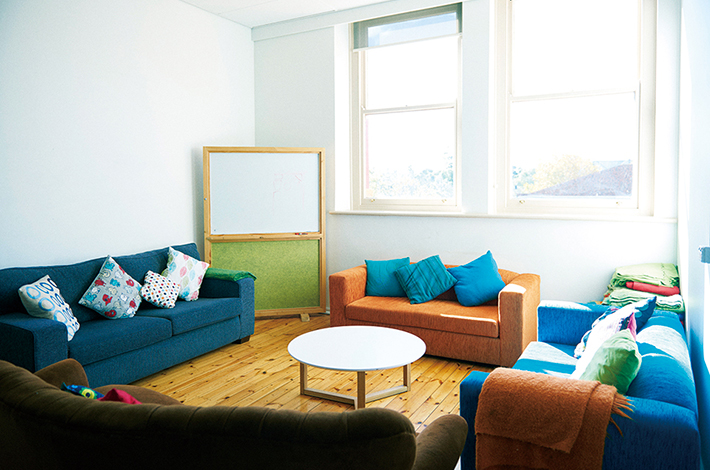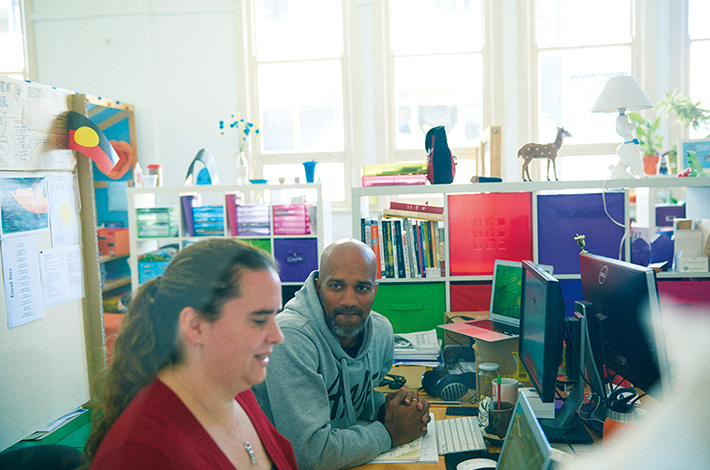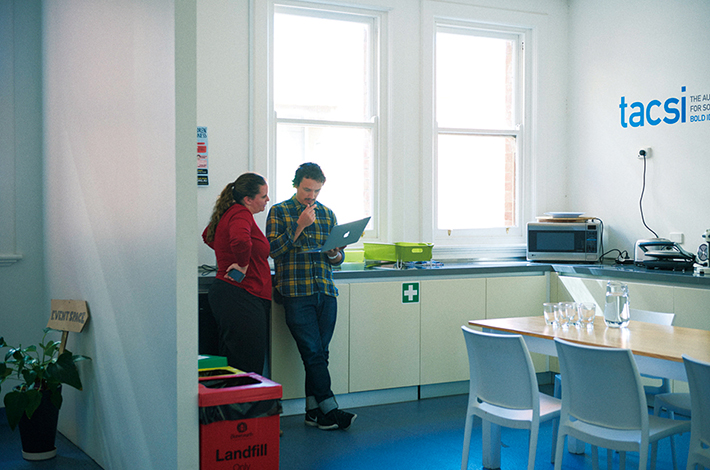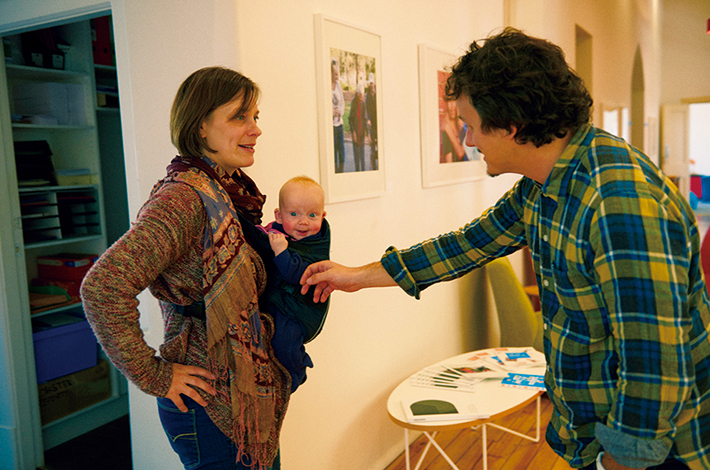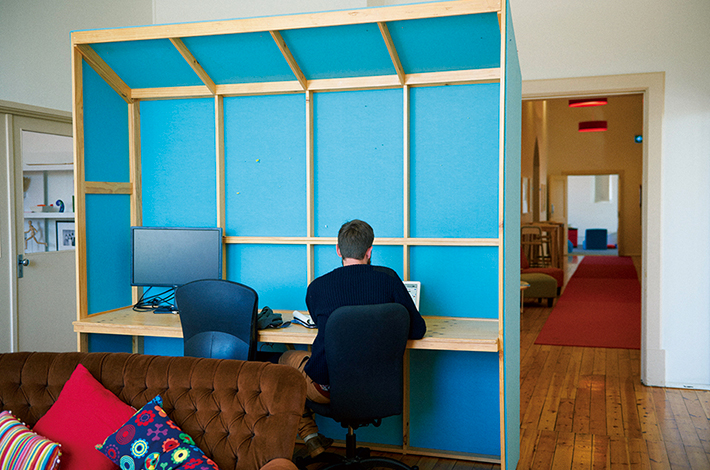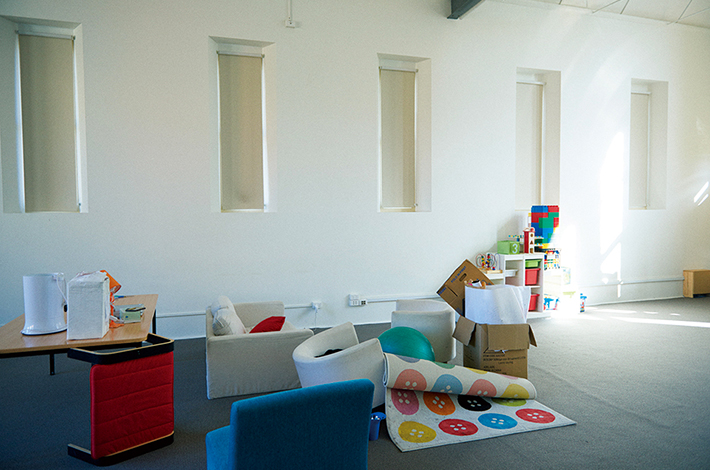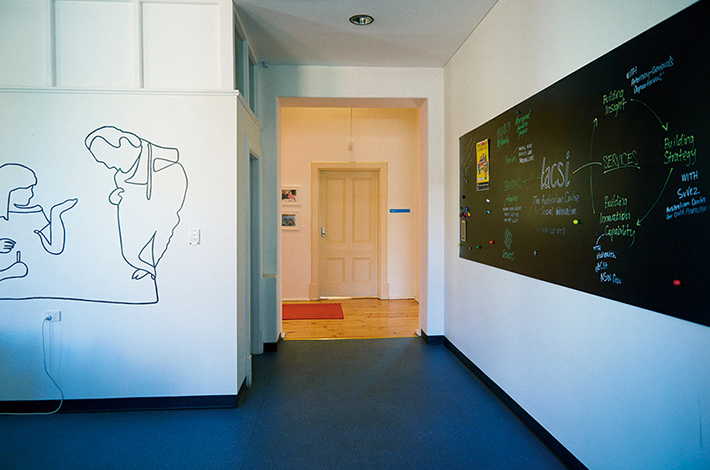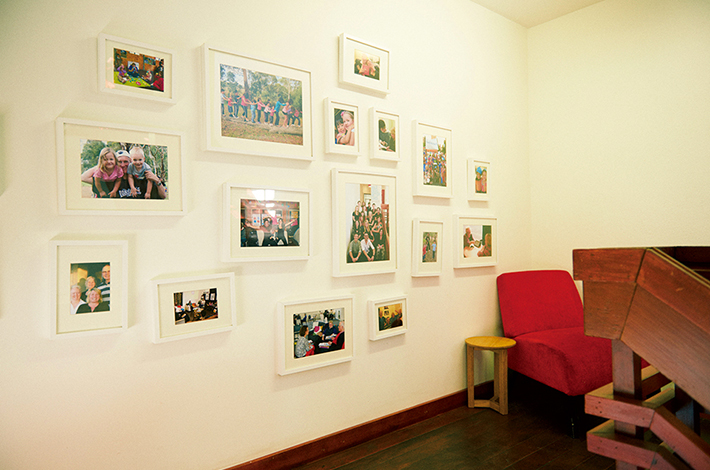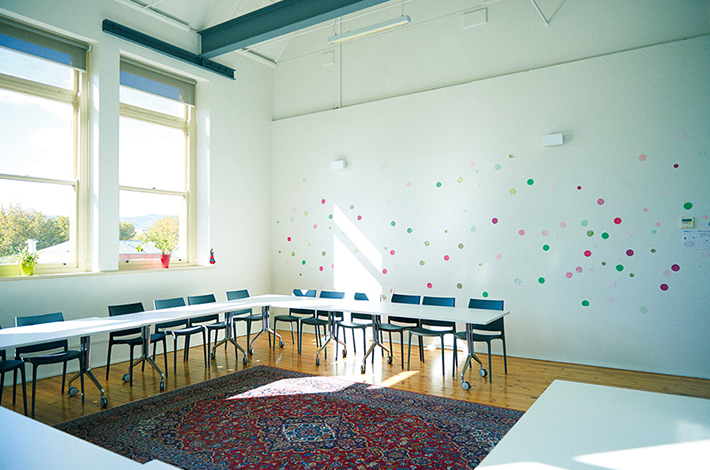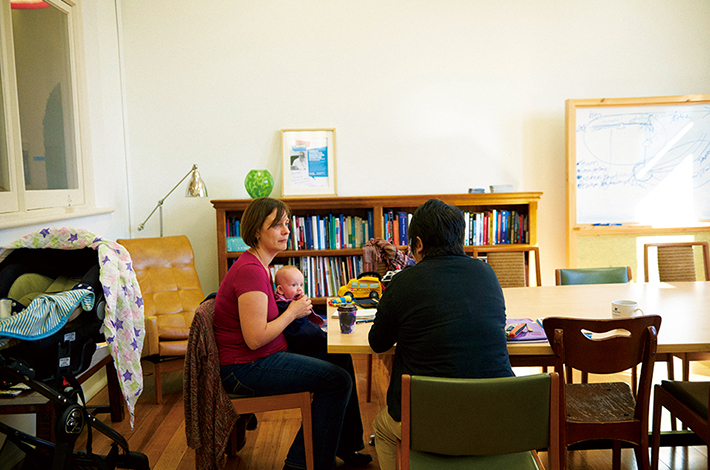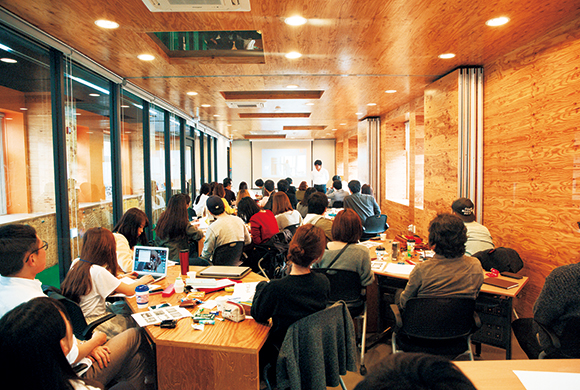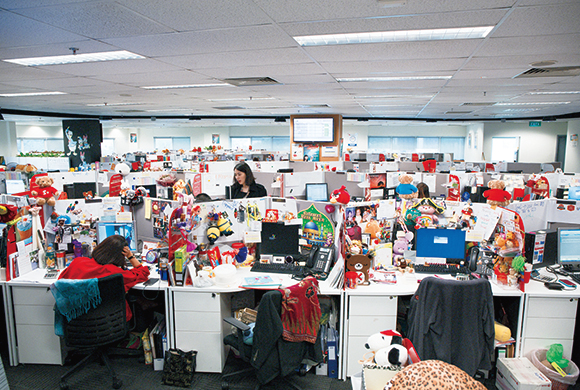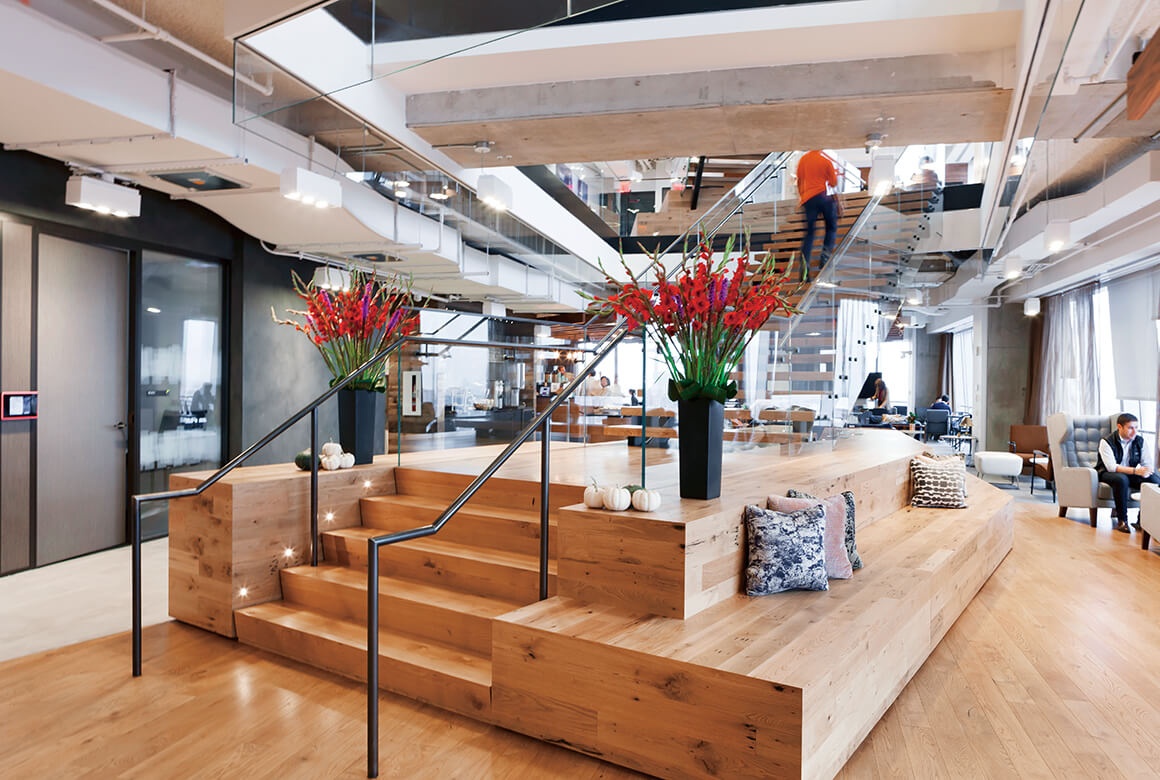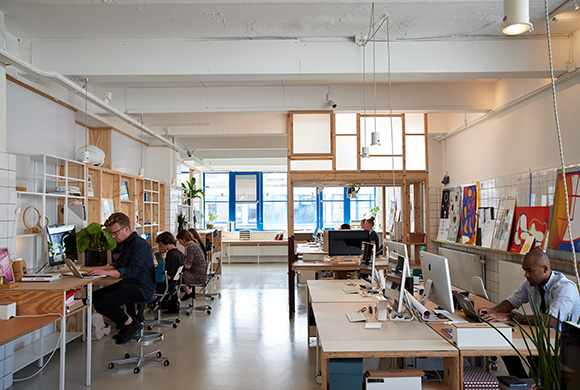Workplace
Aug. 5, 2019
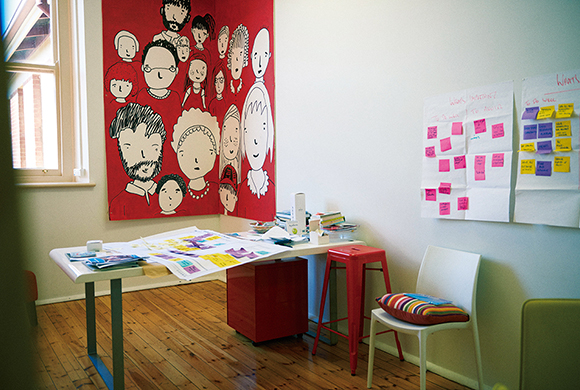
Finding solutions to the social problems of Australia
A governmental organization that supports social innovation
[tacsi] Adelaide, Australia
Tacsi, a governmental organization that supports social innovation, was established in 2009 in Adelaide, South Australia at the recommendation of Geoff Mulgan, CEO of NESTA, a social innovation organization in Europe.
“tacsi’s purpose is to solve persistent social problems by taking a non-governmental approach,” says co-designer Margaret Fraser. “It’s hard for the government to directly effect change, but it is possible to facilitate change. That’s why organizations like ours are necessary.”
In their first year, tacsi focused on financing social entrepreneurs, and in their second year, the focus shifted to providing services.
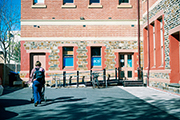
An office in a renovated section of a local historical building.
Established: 2009
Employees: 25
http://tacsi.org.au
The first service was called Family by Family, which involves drawing together struggling families and families that can support them. Social innovation practices provide general support, but tacsi chooses to become fully immersed in lives, and all parties work together to find solutions, with the participants as the main actors.
“In the research stage, when we asked people about their families, the responses were amazing,” says Director Chris Vanstone. “We interviewed the families and spent a substantial amount of time trying to understand their problem. Some parents said they want to be better at disciplining their children, while others said they want to have more leisure time. Most people are aware of their problems, but they don’t know how to solve them.”
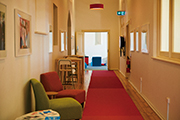
Rooms are divided because the old building is under repair. The corridor between rooms is also used as workspace.
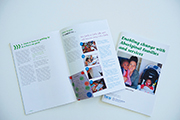
Past projects are documented to help people working on similar issues.
Through the Family by Family initiative, tacsi was able to establish itself as a leader in social innovation. Now, major companies are expressing interest in partnering with tacsi.
“Companies are beginning to turn their attention to helping clients live the lives that they want,” continues Ms. Fraser. “The business and social worlds are completely separate, but many social groups have business aspirations, and a lot of businesses would like to exert social influence. I think this is what social reform is all about.”
Consultancy for Work Style: In-house
Interior Design: In-house
From WORKSIGHT 08(2015.10)
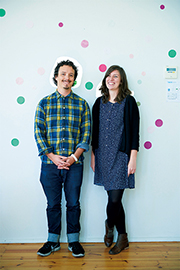
Left: Director Chris Vanstone
Right: Co-designer Margaret Fraser


